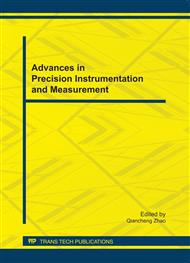p.649
p.658
p.667
p.673
p.679
p.683
p.687
p.695
p.700
Time-Divided Computer-Generated Holograms for the Construction of Spatial Continuous Laser Light Distribution
Abstract:
Science of dealing with the prevention and treatment of disease is important for the maintenance of health in human social life. Laser technology plays an important part in various fields of medical science. In general, a spot laser light is used in laser therapy because of the limitation of laser output. Therefore, the operator has to move the spot position by hand when the treatment area is larger then the laser light spot. We propose a method to convert a laser light to match the target treatment surface using time-divided computer-generated hologram (CGH). In order to get a high laser light efficiency, we consider the phase-only type CGH. We use discrete reconstruction CGH to overcome the speckle problem in the generation CGH. A spatial continuous laser light distribution can be obtained by superimposing the discrete reconstruction from several time-divided CGHs.
Info:
Periodical:
Pages:
679-682
Citation:
Online since:
September 2011
Authors:
Price:
Сopyright:
© 2012 Trans Tech Publications Ltd. All Rights Reserved
Share:
Citation:


